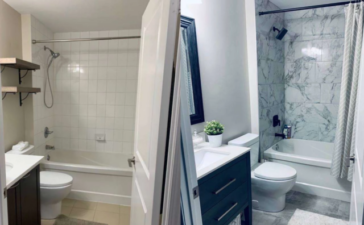As the seasons change and we find ourselves in the depths of winter, it can seem like a distant dream to be able to continue harvesting our own fruits and vegetables all year round. But thanks to outdoor greenhouses, this dream is now a reality! Greenhouses provide an ideal environment for the production of fresh produce even in the midst of winter – this means you can enjoy your own home-grown goodies throughout the entire year.
Benefits of Gardening in Unfavorable Weather
Gardening in unfavorable weather can be a difficult undertaking, but with the help of an outdoor greenhouse, it doesn’t have to be. Outdoor greenhouses provide gardeners with a means to grow plants and vegetables even in climates that are traditionally too cold or too hot for certain varieties. The benefits of gardening in unfavorable weather go far beyond simply growing different types of plants.
Not only do outdoor agricultural greenhouses allow gardeners to grow more diverse crops, but they also offer protection from damaging winds and hail storms that can easily tear up gardens. In addition, outdoor greenhouses provide gardeners with a better way to control soil moisture levels which is essential for healthy plant growth.
Furthermore, temperature regulation within the greenhouse enables plants to maintain steady temperatures during extreme heat or cold spells while avoiding frostbite or scorching temperatures. It is also worth noting that greenhouses can be used year-round because they protect plants from the elements. In fact, many greenhouse owners choose to grow different types of crops in their greenhouses all year long.
Set-Up Considerations
Gardening in unfavorable weather conditions can be a challenge. But, with the right set-up considerations, you can create an outdoor greenhouse that will keep your plants healthy and thriving all year round.
When planning out your greenhouse design, it’s important to consider the climate and environment of your area. You will want to make sure the structure is securely anchored so it won’t be damaged by strong winds or heavy snowfall.
Additionally, you should think about where you plan to place your greenhouse – choose a spot that gets plenty of sunlight while still being sheltered from extreme temperatures and humidity levels. When it comes to materials, use ones that are designed for outdoor use such as polycarbonate sheets or tempered glass – these will help protect against strong UV rays and provide insulation against heat loss or gain.
Plant Selection & Maintenance
In order to maximize your garden’s success and minimize the effects of inclement conditions, it is essential to carefully select the right plants for your area and develop a routine maintenance plan. With the help of an outdoor greenhouse, you can create an environment perfectly suited for even the most challenging climates and extend your growing season year-round.
When selecting plants for a garden, be sure to consider factors such as soil type, temperature range, exposure to sunlight or shade, drought tolerance, and pest resistance. Also take into account how much time you are willing to spend on maintenance tasks such as watering and pruning.
Once you have chosen appropriate plants that match your desired level of upkeep, it is important to establish a consistent schedule of care so that they can thrive in any climate.
Conclusion
Harvesting your own vegetables, fruits, and herbs year-round is no longer a far-off dream! With outdoor greenhouses, you can cultivate any produce you desire all year round. These structures allow gardeners to control the climate, letting them create their own microclimate in any season. With an outdoor greenhouse, you can grow crops that wouldn’t normally grow in your region – allowing you to enjoy exotic plants from around the world.







